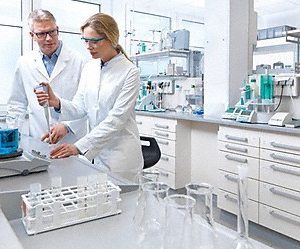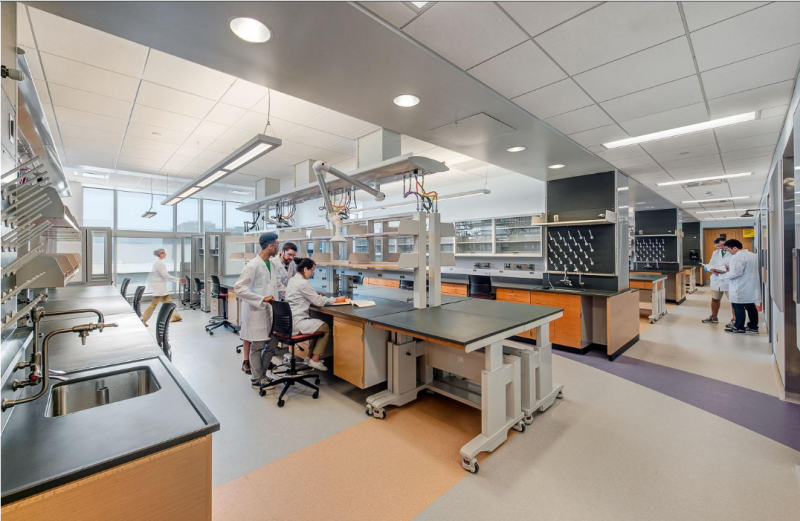A laboratory is an example of ultimate cleanliness, hygiene and a sterile environment. There are strict rules and regulations to adhere to, especially when potentially dangerous materials are being used. To conduct effective and accurate tests and experiments, areas must be free of any suspicion of cross-contamination. Therefore, when you visit a lab, you should note that is clean, orderly and well-managed. Here are some more things you might notice:
The floors should be clear of any potential trip or slip hazards. Spills or dropped objects should always be cleaned up straight away. Anything not being currently used should be cleared away of tables, worktops, aisles and floors. There should also be two clear and unobstructed pathways to exits from the laboratory.
Any eyewash stations, showers, fire extinguishers or electrical panels must also have a clear space around them. Any sink traps or drain traps in the floor should always contain water to stop gases from escaping into the laboratory atmosphere.
Apparatus that is used on benches or worktops should be firmly attached to the surface or kept well away from any edges. When experiments have concluded, areas involved should always be cleaned straight away. Work areas must remain clear of possible contamination.
As you can appreciate, a lab needs to maintain order and specific conditions for both scientific and safety purposes. This is what makes moving a lab such a tricky operation. The tasks required to pack up delicate apparatus, transport a range of substances, sterilise environments and recalibrate machinery are extensive and costly. Thankfully, such projects can be overseen by specialists in relocating important environments like laboratories. For more information on Lab Relocation Services, visit a site like Aport Global lab relocation services
Storage is another important aspect of daily life in a laboratory. Any items that are sharp, pointed or containing a blade should always be stored in a sheath. Any lab clothing present should be stored in a dedicated area and not left to be draped over the backs of chairs or benches, for example. Equipment that is not used often should always be stored away until required.
Containers of chemicals should not be stored on the floor. The storage of boxes, packages and other items also require a dedicated space and should never be found under worktops, benches, desks or above cabinets or on shelving. As well as being a fire risk, these also represent a hazard to staff who might be in the middle of an experiment using dangerous substances!


